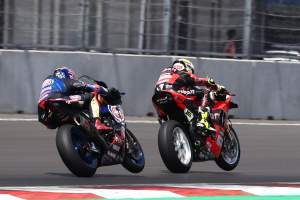“My idea was to remain in MotoGP, because I’ve spent 16 years in this championship. At the end, it couldn’t be possible.
“I remember that some years ago you’d go to the next category when you win or you fight for winning in the lower categories.
“Now I think riders – well, managers – are coming crazy, because if you make one or two races good, ah, [it must mean] you’re prepared for the higher category.
“I think it’s not the correct step. But in any case this is the situation.
“I don’t decide who races in MotoGP. But for me in the past it was more correct to go to the next category after you win or after you fight for winning the title.”
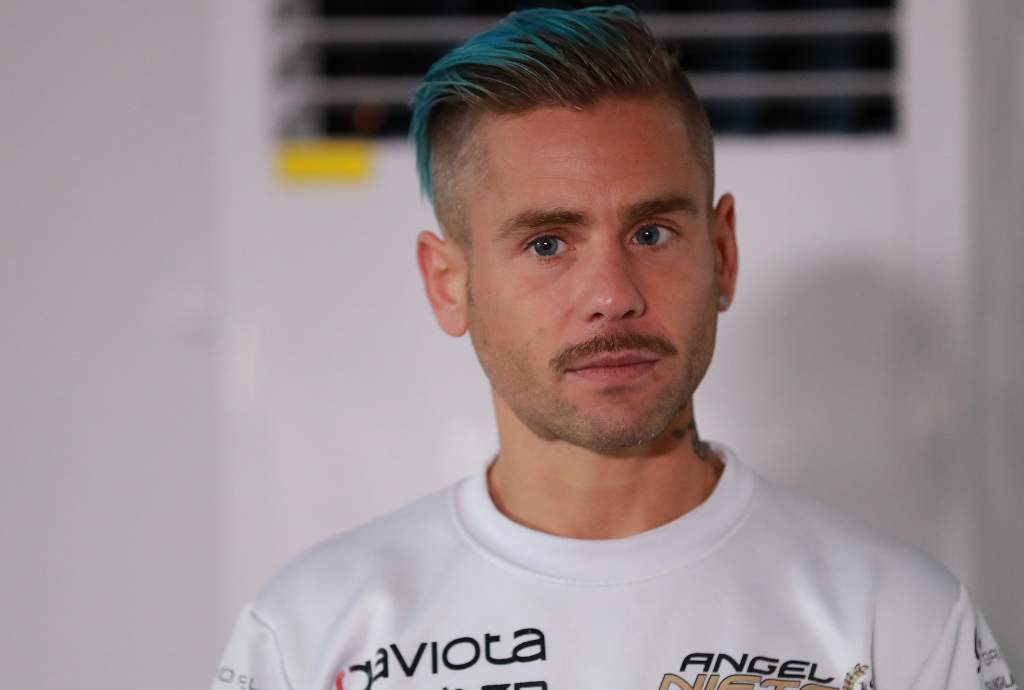
Alvaro Bautista felt aggrieved, and wasn’t trying very hard to hide it. His grand prix career would be limited to 16 seasons, nine of them in the premier class (with the rest in 125cc and 250cc). During those nine he raced for four different brands – yet he clearly thought he deserved a go with a fifth one, especially as said brand had (at the time and especially in hindsight) a genuinely strong ride going.
Jorge Lorenzo was tentatively linked but swiftly chose an ultimately ill-fated works Honda move. Dani Pedrosa considered it but realised his heart wasn’t in it and elected to retire. So a ride at the new Petronas SIC Yamaha team – to serve as Franco Morbidelli’s team-mate – remained open.
Though the team would be new, the equipment was very promising – given Johann Zarco’s heroics on Tech3’s satellite Yamaha M1 in the preceding year and a bit. And Bautista’s current employer Jorge ‘Aspar’ Martinez, amid his brief tenure as an advisor to the Petronas project as he prepared to hand over his MotoGP entry slot to the new enterprise, said Bautista was one of the names on a two-rider shortlist.
Bautista’s main opponent was a prospective rookie who would eventually conclude his junior grand prix career with the following championship finishes: 10th in Moto3, 13th in Moto3, 13th in Moto2, 10th in Moto2. Yet Yamaha and the SIC team decided to bet on youth, and Bautista’s MotoGP career was over.
He clearly felt he was leaving with unfinished business, and made his point in World Superbikes over the seasons that have followed.
He became world champion. Remarkably, so did the other guy.
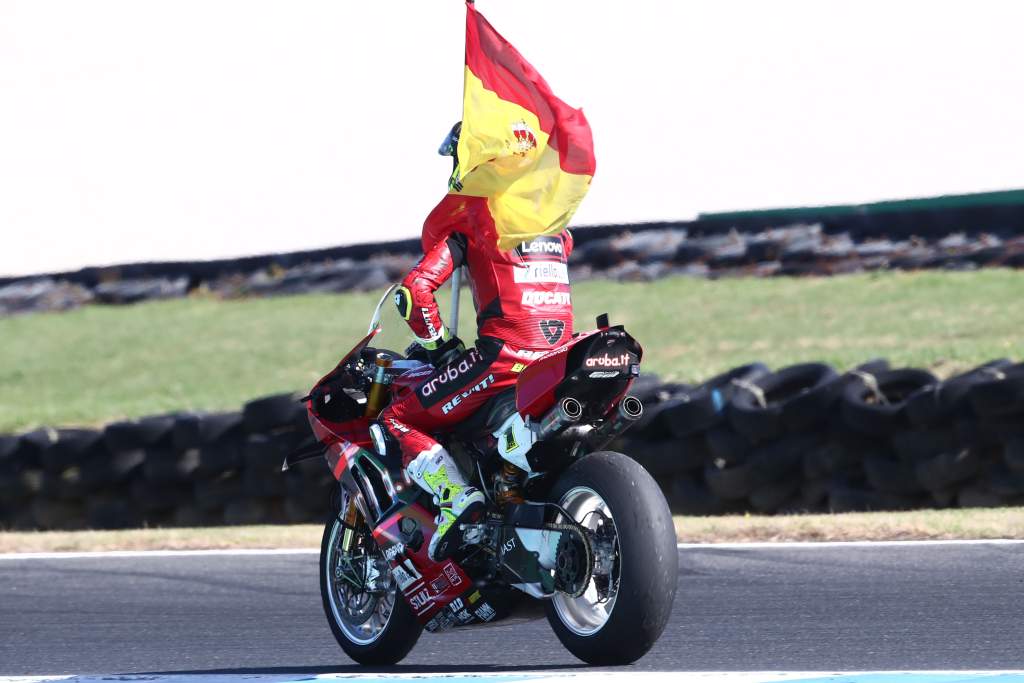
Last year Bautista defeated past champions and rising star/category legend respectively Toprak Razgatlioglu and Jonathan Rea to win the World Superbike title. This year he’s just started his title defence with a clean sweep of all three wins at Phillip Island and a 28-point championship lead already.
His second career is going very well indeed. So was his first cut short too soon?
Bautista’s MotoGP story
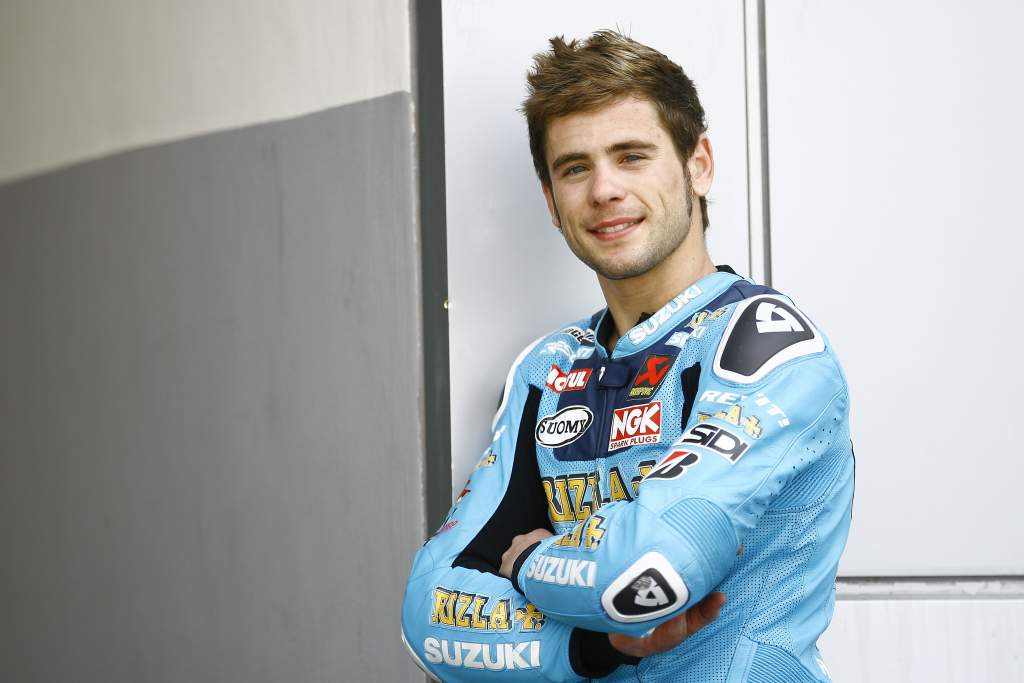
Bautista graduated to MotoGP in 2010 after winning the 125cc crown and coming second in 250cc – yet in a way he was set on a journeyman path from almost right away, despite making his debut as a factory Suzuki rider.
Bautista and his team-mates*
0.096s quicker by average** fastest lap per weekend
5.585s quicker by average** race gap
22-30 qualifying score
26-10 race score
* When bike spec and class were the same
** Trimmed mean, 80% of data
Though he started 158 MotoGP races, there is remarkably not that much meaningful team-mate comparison within Bautista’s record.
It started out already at Suzuki. After a first season in which Loris Capirossi had the edge over Bautista over one lap but ended up with just over half his team-mate’s points through injuries and DNFs, the veteran Italian vacated his ride and the budget-limited team opted not to fill it.

It meant that, save for a couple of races, Bautista was flying the flag solo for Suzuki in his second season, which he started by breaking his left femur in Qatar practice. Despite the loss of a reference within the garage, he was generally quicker than before once back to fitness but ultimately scored fewer points.
Certainly, he had done enough to stick around in the premier class in some form – and, with Suzuki mulling a MotoGP hiatus, Bautista pulled the plug before it did, committing to Gresini Honda. In doing so, he ensured that two riders would loom particularly large over his MotoGP story.
The first one was the late Marco Simoncelli, who had beaten Bautista to the 250cc crown in 2008 and who had made a strong impression during his time with Gresini, leaving Bautista with unenviable shoes to fill following his switch in the aftermath of Simoncelli’s untimely demise.
The second was Stefan Bradl, taking over the other non-CRT satellite Honda ride at LCR.
Bautista had team-mates during his three years but those team-mates – Michele Pirro, Bryan Staring and Scott Redding – rode either CRT- or Open-class Hondas, making direct comparisons somewhat meaningless. But Bradl was a relevant benchmark.
Bautista compared to Bradl, 2012-14
0.310s slower by average** fastest lap per weekend
0.964s quicker by average** race gap
13-39 qualifying score
28-21 race score
3-1 podiums
1-1 pole positions
* When bike spec and class were the same
** Trimmed mean, 80% of data
Bautista’s general career trend held here – he was getting battered by Bradl in qualifying, but was arguably the more effective rider on Sundays. But he was badly off-kilter in 2014 in particular, qualifying woefully and crashing frequently, to the point that rookie Redding finished just eight points off with an Open-class Honda RCV1000R.
Bautista’s days as a satellite Honda rider were clearly numbered, with Redding having made a great case for a promotion within Gresini. Yet, as Bautista found a suitor in Aprilia’s new MotoGP programme, it ended up keeping him with Gresini, which itself cut bait with Honda to run the Piaggio Group brand’s factory team.
Over the first part of that Aprilia stint, Bautista ran up the score against a completely out of sorts team-mate in veteran Marco Melandri, who was soon relieved of his duties. The long-term replacement for Melandri was, inevitably, familiar foe Bradl, who had left the Honda camp when Bautista did.
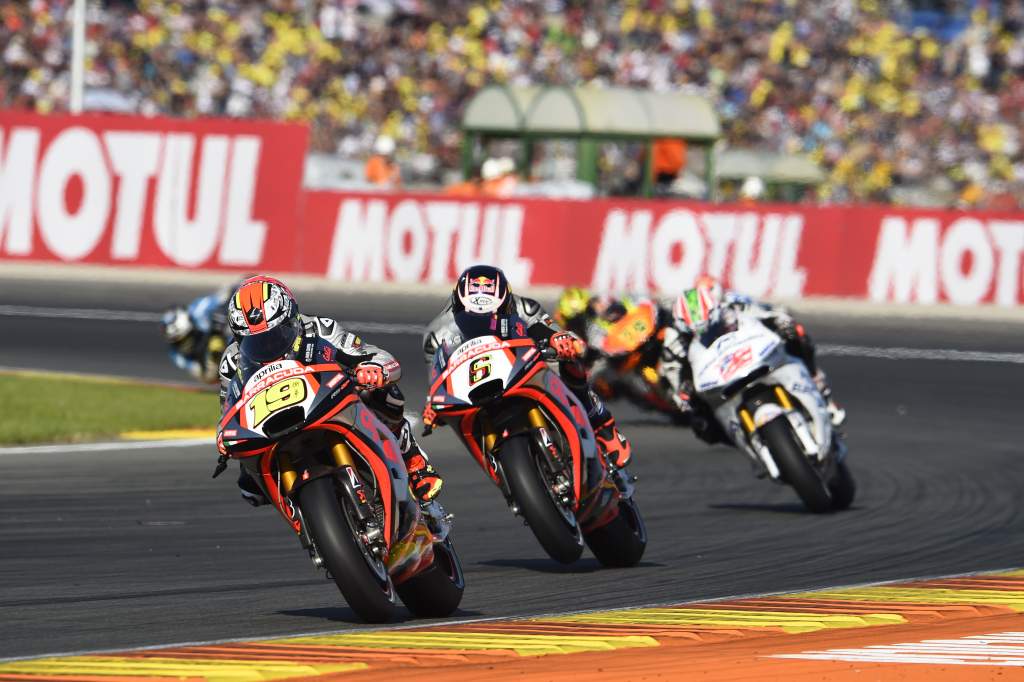
The state of play between the two at Aprilia was, by and large, same as it ever was – Bradl had something extra in qualifying, Bautista was a more reliable points-producer on Sundays. But the margins were close, and that may have played a part in both proving expendable.
The most memorable part of the pair’s Aprilia tenure was when both riders – already known to be making way for Aleix Espargaro and Sam Lowes in 2017 – jumped the start in Austria and got publicly lambasted by both the team boss and the Piaggio Group CEO.
For Bradl, the Aprilia exit was effectively the end of his full-time MotoGP career (although he’s done 33 races since, so you could nitpick that point). But Bautista was actually approached by Aprilia the very next season for a potential return, over the course of a campaign that had enough high points to be considered an overall success.
That campaign was with Aspar, the very team that took him to a 125cc title and now chose him for its year-old Ducati. And Bautista was happy enough to spurn Aprilia and continue with the Aspar arrangement for another year.
But his early-2018 form on a hand-me-down GP17 was shaky. “After two or three races 80% of the [2019] grid was closed – at that moment, my performance was not what I expected,” Bautista lamented, having compromised his preparation for the GP17 with a big crash in Valencia testing.
“I felt with a lot of problems with the bike, I couldn’t go fast as in the past. When I started to feel good with the bike, started to be more competitive and show my potential, there were no more places on the grid.”
Though his form picked up quite significantly soon enough, it wasn’t enough to make Petronas SIC’s 2019 snub into anything like an absurd outrage. And Bautista’s best argument for staying on the grid was made already long after he’d committed to a future elsewhere.
Making a point
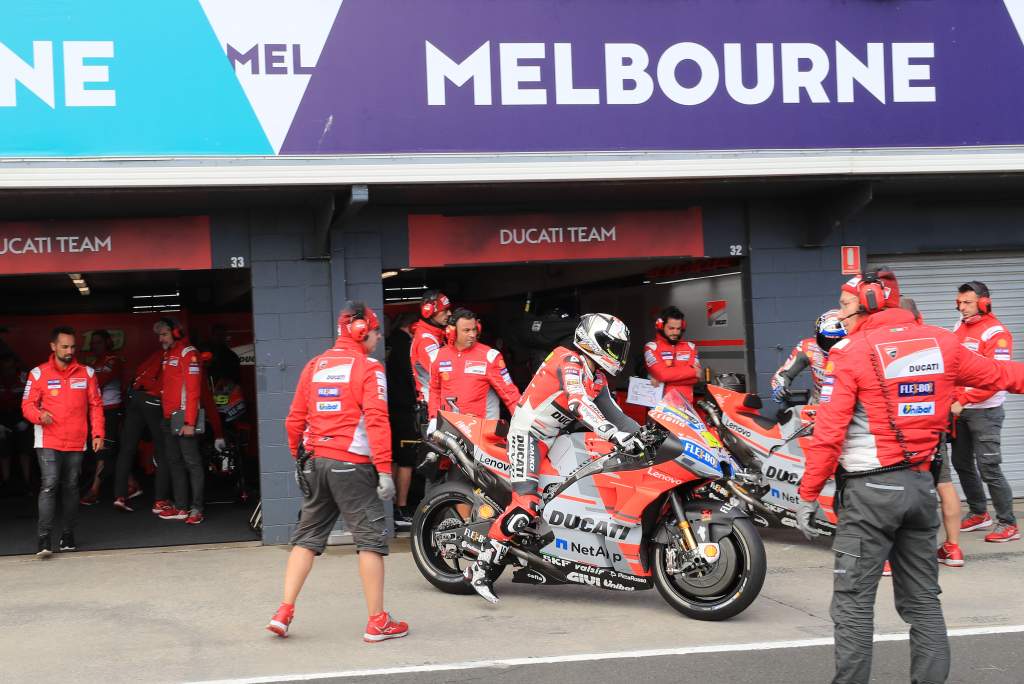
In late-2018, Jorge Lorenzo was already firmly in that unfortunate part of his MotoGP career that was basically a line of injuries, one spell of recovery feeding into another.
He tried to return two weeks after sustaining a hairline wrist fracture at Buriram (which itself followed a foot fracture suffered at Aragon) but had to bail on the Motegi weekend after just two practice laps – which meant he wasn’t replaced in Japan. But he was replaced the following weekend at Phillip Island.
His replacement, of course, was none other than Bautista, already contracted by Ducati as a factory rider in World Superbikes for 2019. And Bautista did great.
With limited time to adapt to the GP18, Bautista shunted on Friday and Saturday, the latter crash leaving him 12th on the grid (his Q1 time would’ve been good enough for fifth). But, as usual, his best came on Sunday, Bautista picking his way through the field to join the podium battle and eventually finishing fourth. The laps he’d spent in the top three were officially his first since 2014.
“I’m not too surprised,” Ducati’s lead rider Andrea Dovizioso, who finished one place ahead, told MotoGP.com after the race.
“Alvaro, for his riding style and his talent, is one of the top riders. From back in 250cc.
“So I’m not surprised about that – especially for this kind of track, where the consumption of the rear tyre is so high, he’s really good on that. He did a really good race.”
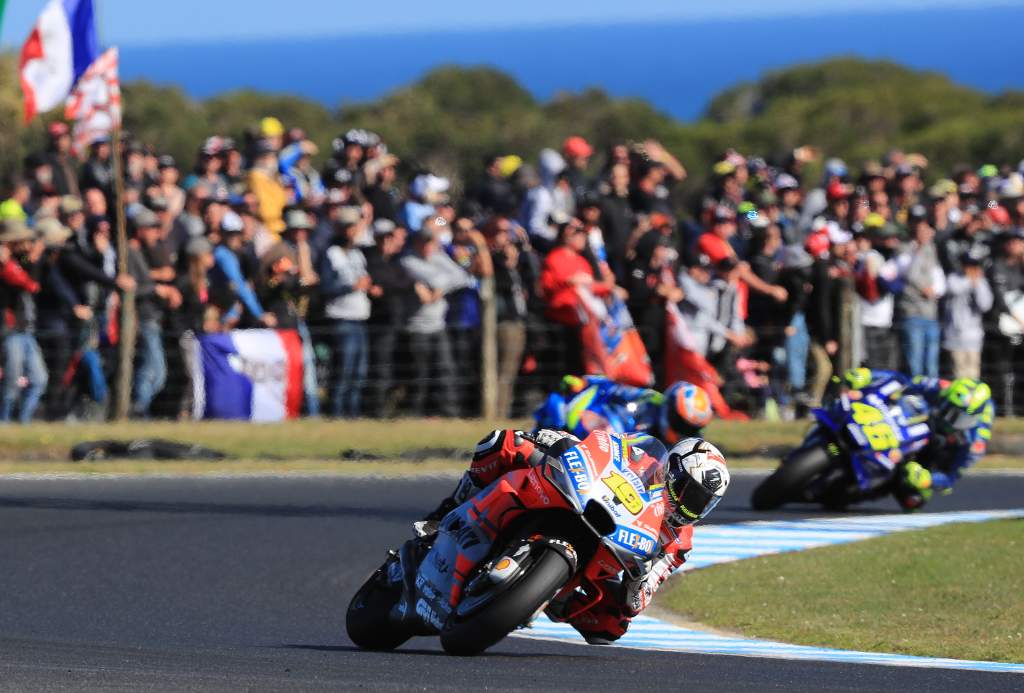
And, remember, this wasn’t quite the current Desmosedici. Phillip Island used to be a nightmare for the Ducati – and while it was clearly a much better proposition at the Australian track that year already, Dovizioso lamented (as he would do more or less until the end of his time in red) a mid-corner deficit that meant the GP18 was “still not enough” to fight for a Phillip Island win.
And yet Bautista, with limited knowledge of that specific version of the bike, was very much in the mix, instantly producing a result that surpassed the entirety of his stints as a factory MotoGP rider for Suzuki and Aprilia.
Alas, Quartararo
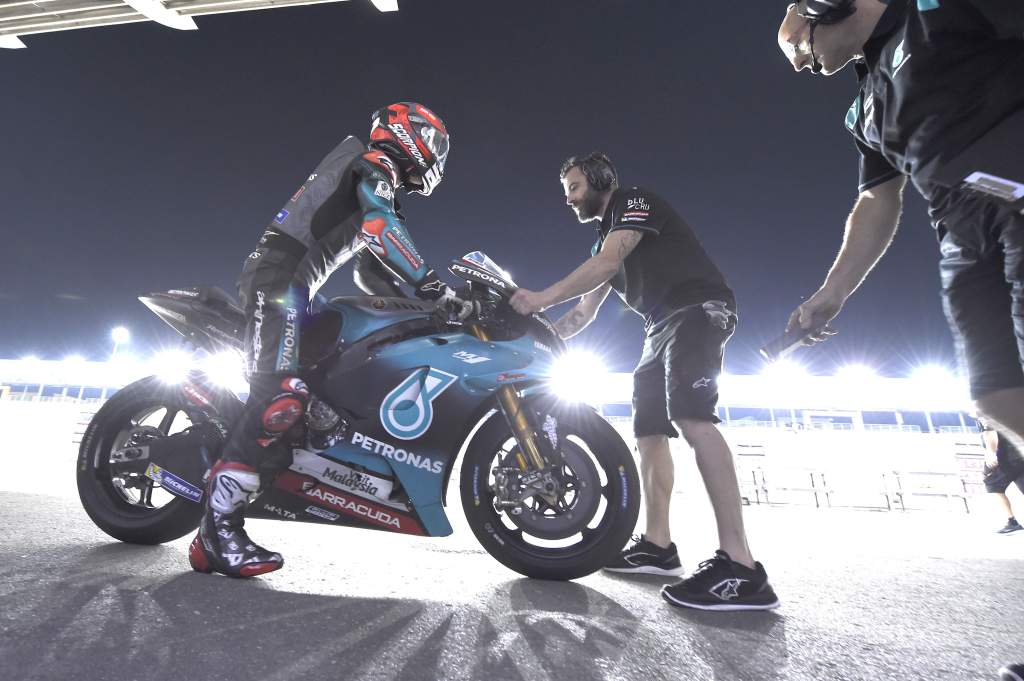
Bautista won in 13 of his first 15 World Superbike starts, including the first 10 in a row. He somehow managed to lose that championship fight by quite a substantial margin – through a mixture of shunting, a mid-season balancing of performance and Rea’s relentless points-scoring – but surely an instant adaptation like that suggested Petronas Yamaha had royally blundered on passing up on Bautista?
Well, you obviously know the answer to that one. The rider preferred to Bautista was one Fabio Quartararo – first simply a pleasant surprise, soon a qualifying phenom (something that Bautista never was) and then eventually the all-round best rider in MotoGP.
Bautista could’ve won every WSBK race that season – Yamaha and its satellite team would’ve still been doing victory laps about just how stupid good Quartararo turned out to be in such a very short period of time.
In a sense, it’s pure win-win, an abundance of success for a young rider and a veteran both embarking on something new. MotoGP is better off for Petronas Yamaha having signed Quartararo.
But it’s fair to wonder whether Bautista just missed out on his best MotoGP form. WSBK has been kind to him but of his four full seasons there so far, the two years at Honda after a temporary Ducati exit were a wash in every respect but, reportedly, bank balance.
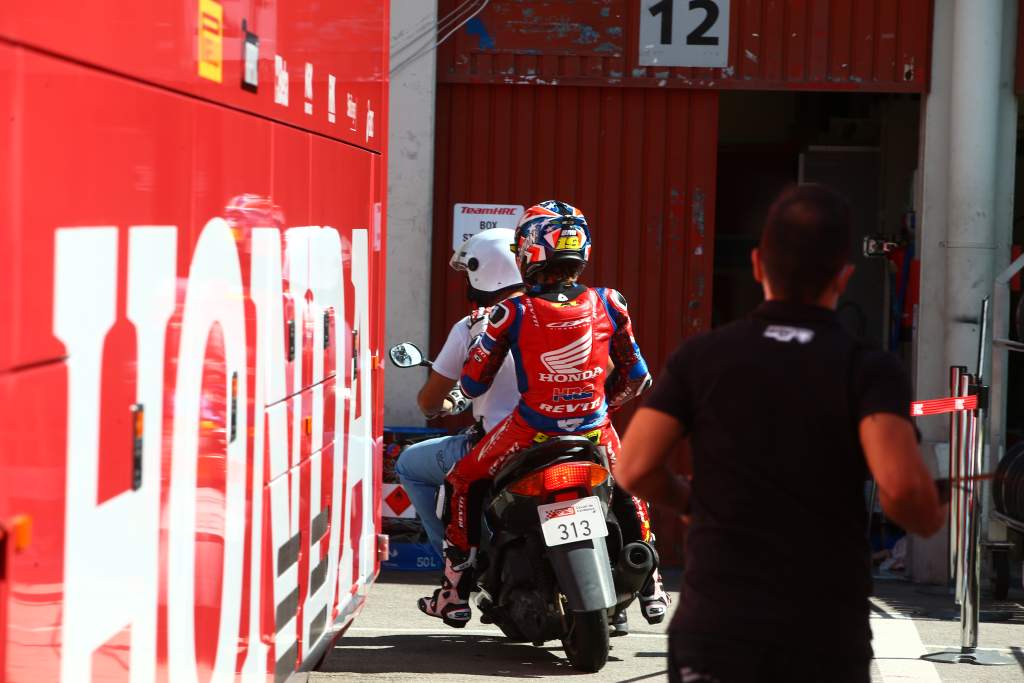
What if Bautista got those two extra years in MotoGP instead? Would he have finally won a race on a privateer M1? Would he have doubled or even tripled his premier-class tally of three podiums?
And did he deserve the chance to? Look at the Phillip Island race in red and you can only say ‘yeah, for sure’.
But look at the stagnation at Gresini – both Gresini Honda and Gresini Aprilia – and you could rightly point out he’s had his opportunities.
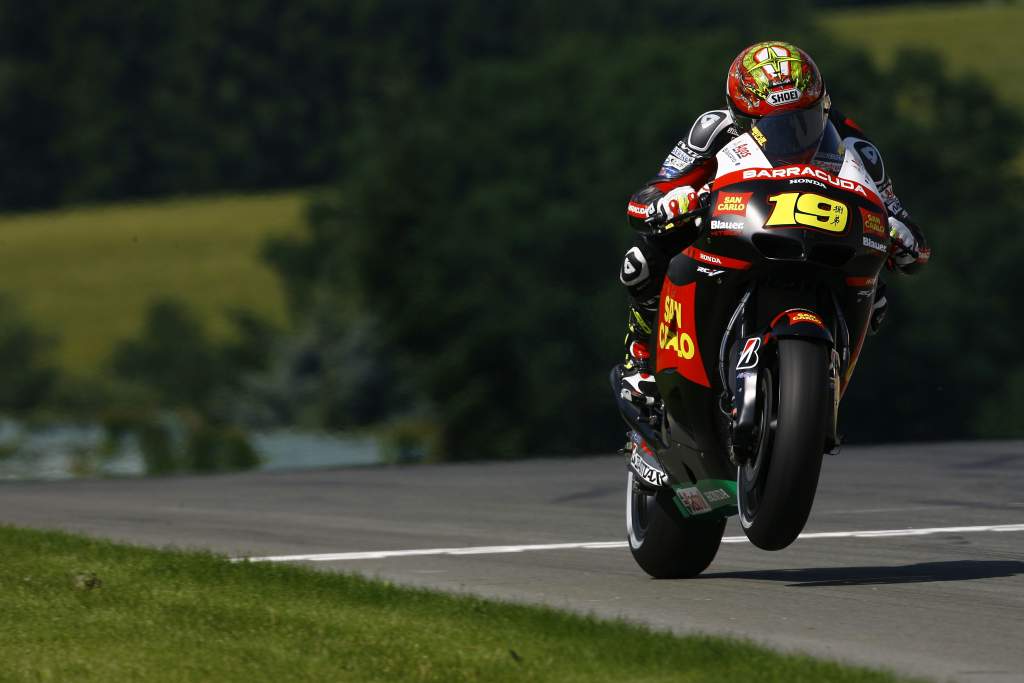
His 158 starts are the 16th-most in class history – only Colin Edwards has more without a win, although Pol Espargaro will also go clear if he fails to win in his first five races with Gas Gas in 2023.
So, ultimately – even without the context of Quartararo ascending – the numbers do probably say no great injustice was committed against Bautista.
But the way he eased to the Superbike title in 2022 and how he began 2023 last weekend suggest that, had the cards fallen differently, he could’ve maybe been another member of that club that includes Ducati-era Dovizioso and Aprilia-spec Aleix Espargaro – riders who, in an ever more young championship. have proven you can still change the record on who you are even a decade into a MotoGP career.






